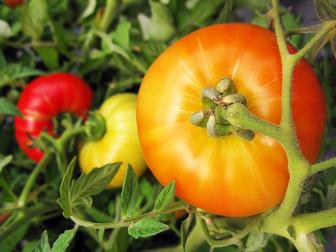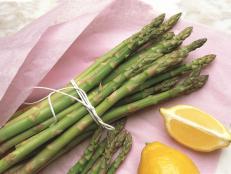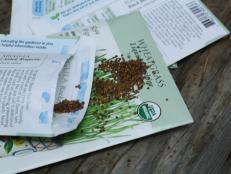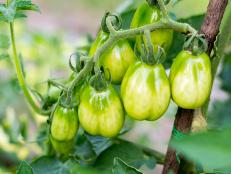How Far Apart Should Tomatoes Be Planted?
Tomato plant spacing depends on a few factors, including the variety type and the type of garden. Follow our advice and you'll be spacing for success.
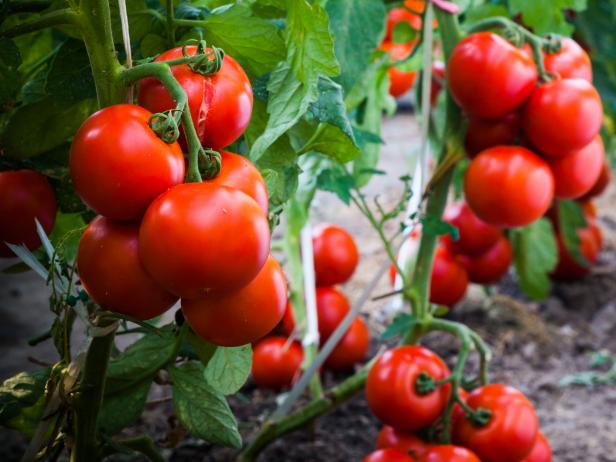
Shutterstock/Fotokostic
Especially if you’re growing in a small space like a container or raised bed, you may be tempted to plant several tomatoes closely together. But this can be a recipe for garden disaster. Planting tomatoes too closely can cause all kinds of issues, from stunted growth to disease. Thankfully, it’s easy to space plants properly.
Tomato Spacing by Plant Type
A general recommendation is to place tomato plants about 18-24 inches apart, but plant spacing actually depends a lot on the type of tomato variety you’re planting. Research the variety or follow spacing guidelines on the seed packet or plant tag.
Determinate tomato varieties are bush-type plants that grow to a certain height and stop; they should be planted 18-24 inches apart. Some determinate tomato varieties are bred to be smaller, and these can be planted more closely together; varieties labeled as compact or dwarf can be planted as closely as 12 inches apart.
Indeterminate tomato varieties are vining plants that continue growing until pruned or until they are killed by frost. These plants typically grow more up than out, at least as compared to determinates, so they can be planted as closely as 18 inches apart but may benefit from more space.
Tomato Spacing by Garden Type
Plant spacing also depends on where you’re planting, whether in the ground, in a raised bed or in containers.
In Containers: Except for the truly compact container tomato plants, which can be grown in containers as small as 12 inches wide and deep, tomato plants should be grown one per container in large containers at least 18 or 24 inches wide and deep. It’s tempting to fill a container with more than one tomato plant, but your tomatoes will benefit from having their own space. You can supplement with other low growing plants like lettuce or marigolds that won’t compete with your tomato.
In Ground: If you’re planting directly in the ground, you may have more space and be planting in rows. In that case, space your tomatoes 18-24 inches apart along a row, but space your rows about 36 inches apart. This will leave enough room for you to work between rows. If you’re planting more intensively in the ground, not in rows, follow the 18-24 inches guide throughout, but consider how you will reach the plants without trampling them.
In Raised Beds: Guidance for planting in raised beds is similar to planting intensively in the ground, following the 18-24 guide. The depth of your raised bed will play a role, too. The deeper the soil, the more available nutrients for your tomato plant and space for your plants' roots; in deeper soil (12 inches or more), you may be able to get away with slightly closer spacing.
How to Plant, Grow and Care for Tomatoes
Consider this your ultimate guide to choosing tomato plants, planting, growing and caring for tomatoes, and harvesting the best-tasting tomatoes ever.
Why Does Spacing Matter?
Tomatoes planted too closely together may be more likely to develop problems, such as:
- Disease – A lot of plant diseases flourish on moist leaves. If tomatoes are planted so closely together that sunlight and air can’t dry out the leaves, the plants will be more likely to develop harmful diseases.
- Stunted Growth – Plants in your garden compete for resources like water, nutrients in the soil and sunlight. Tomato plants require a good amount of these resources, so if they’re planted closely together, they will compete and likely all lose.
- Low Production – Even if tomato plants growing closely together survive, they may not produce as many tomatoes as they could have if properly spaced.
Correct space allows for:
- The right amount of sunlight to get to plants.
- Good airflow around plants.
- Ideal distribution of resources including water and nutrients.
- Proper support of plants via stake, cage or trellis.
- Ease of harvesting.
We're sorry, there seems to be an issue playing this video. Please refresh the page or try again in a moment. If you continue to have issues, please contact us here.
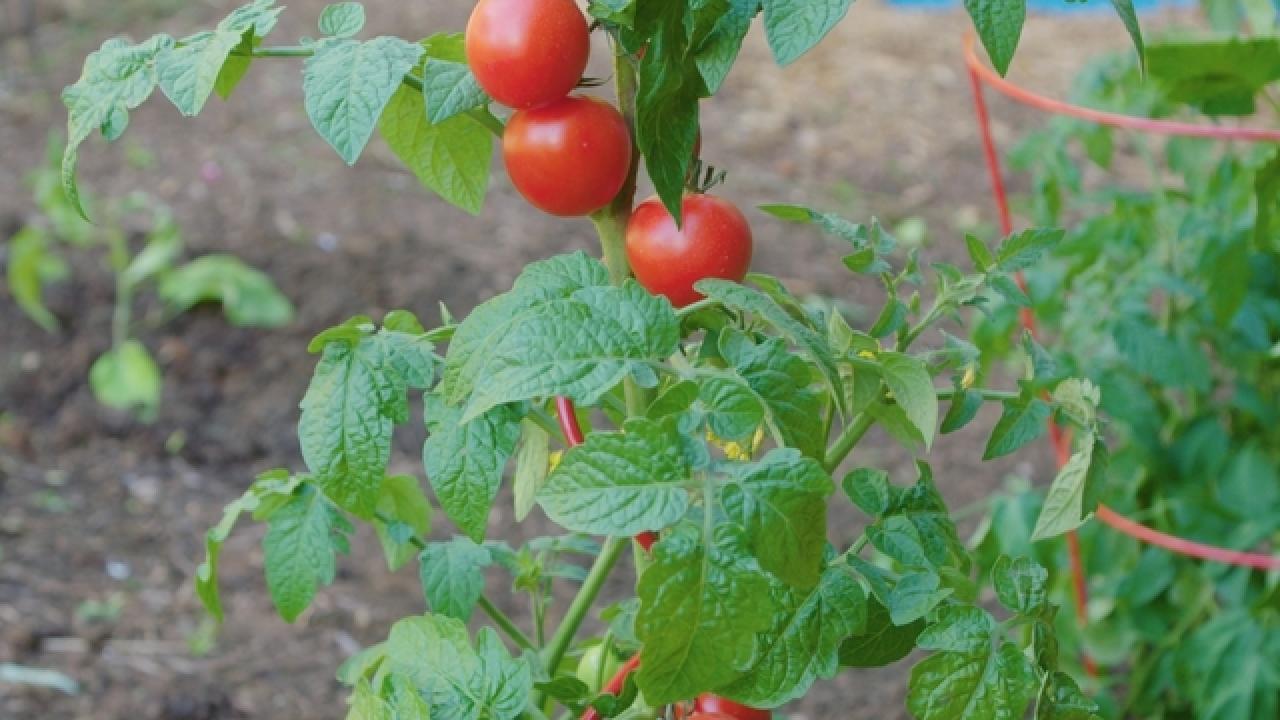

%20Taniya%20Nayak,%20Ty%20Pennington,%20Alison%20Victoria,%20and%20Brian%20and%20Sarah%20Baeumler_BOTB_HGTV%20.jpg.rend.hgtvcom.196.196.suffix/1683310636672.jpeg)




